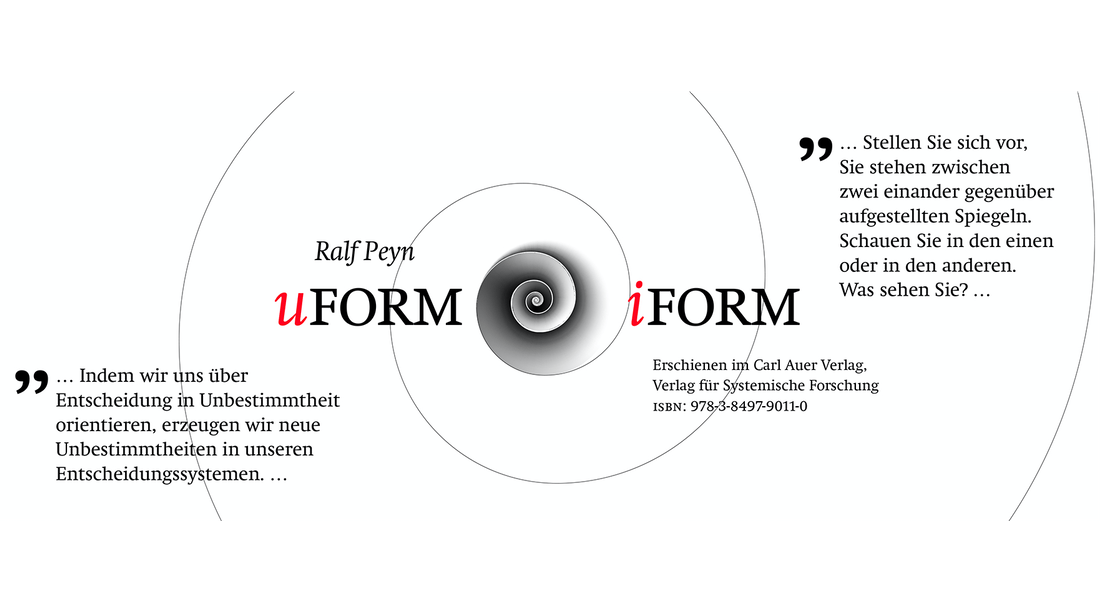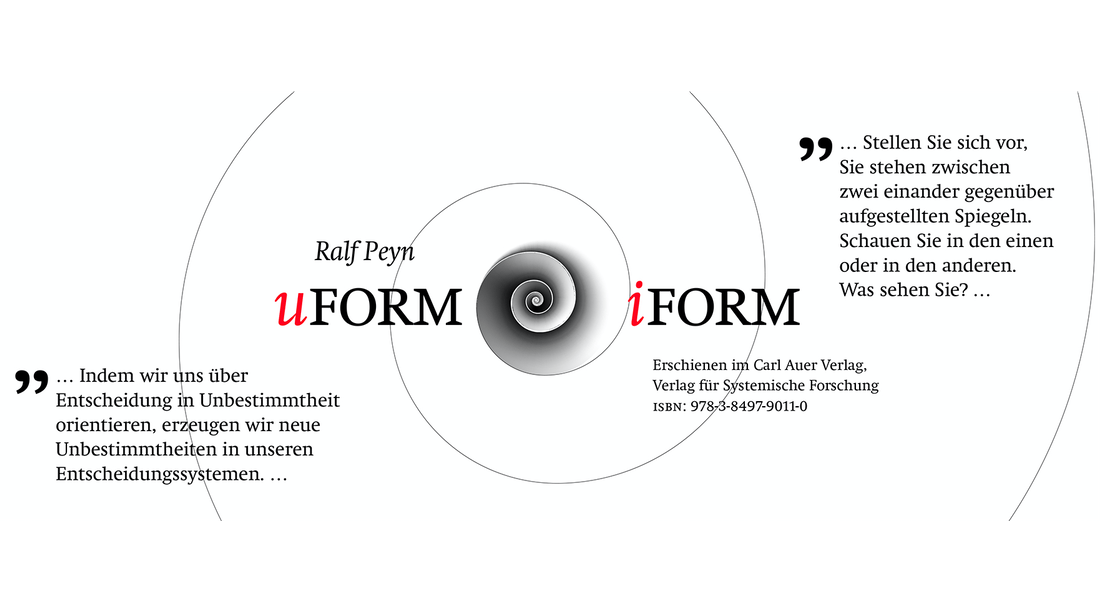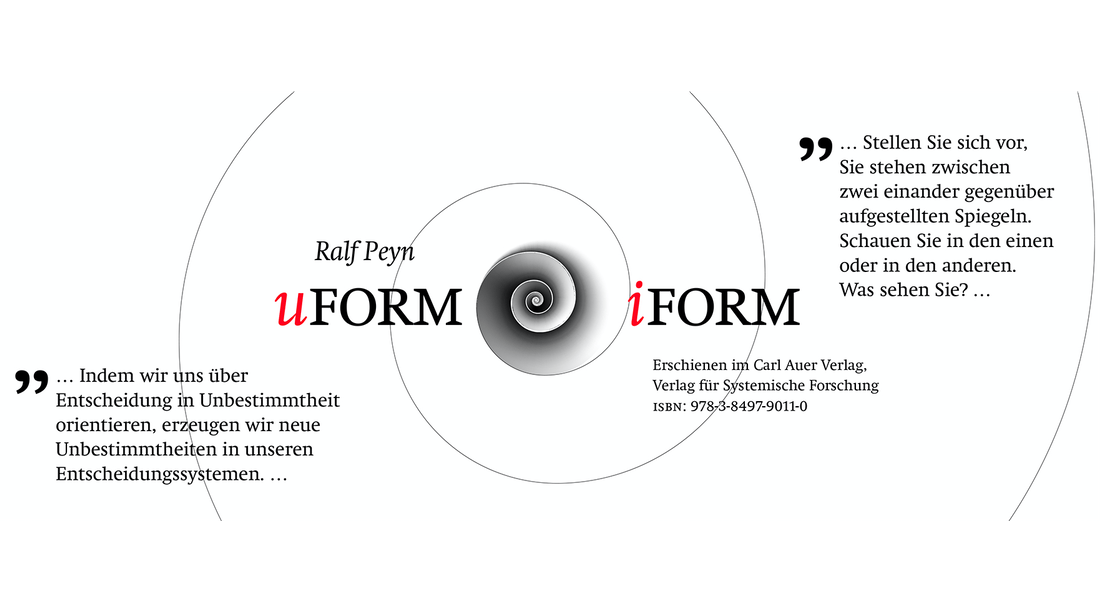How does System function/operate 5 – mindFORMs
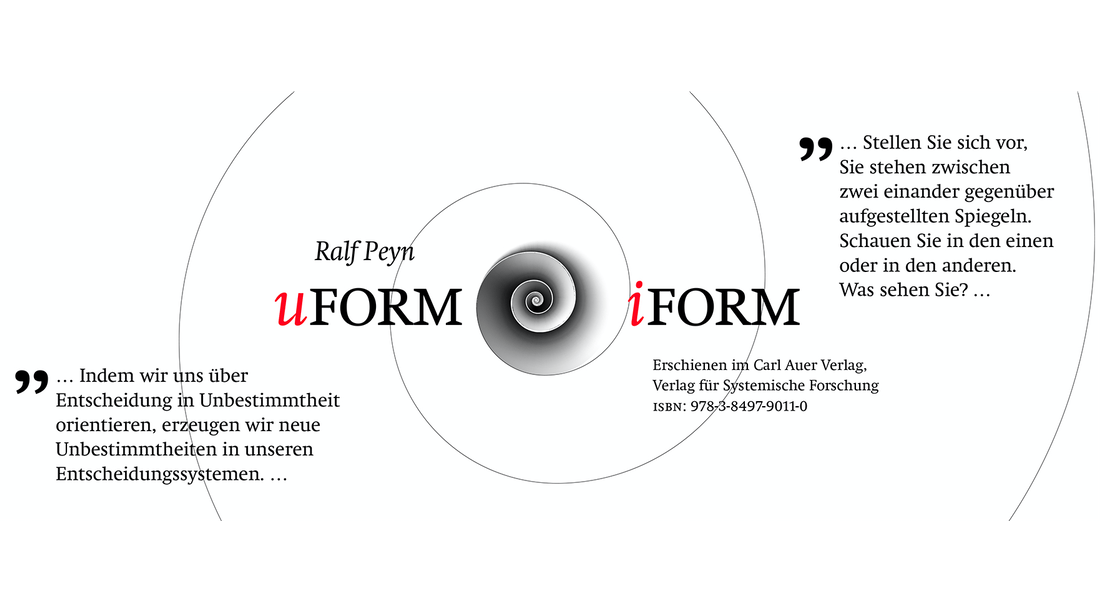
preliminary remark: our decisionFORMs, lifeFORMs and mindFORMs now have a general label:
Crazy Machines
In order to understand how self-observation works, how systems relate to themselves and (ex)differentiate themselves (out of themselves), it is helpful to observe and analyse decisionFORMs, lifeFORMs and especially mindFORMs.
As always, I would advise you to first read through the previous four articles in this series to understand the underlying structure on which these emulated autopoietic systems are based.
We do not limit ourselves to text, but transfer systemics vividly into computer experiments. Thus, we can observe self-referential and autopoietic systems in their self-development, compare them with each other and real systems and analyse them.
They become synaesthetically fuller, more agile and more comprehensible.
The videos and programs which you can download in the download area of the uFORMiFORM website will help you to develop a deeper insight into what happens in Cognition and Communication and in cognition- and communication-systems.
They fill isolated observational knowledge that has been transferred into auditive forms or frozen into images or systemic constellations with to minimal requirements reduced experimental knowledge about decision systems.
Real systems are usually so complex that you cannot comprehend them with text models alone. Their complexity easily tempts us to describe them in trivialised or complicated ways and in the end maybe even to design our descriptions as self-fulfilling prophecies. Whatever the thinker thinks, the prover proves.
mindFORMs, decisionFORMs, lifeFORMs and SelFis provide you with the opportunity of testing your thought- and operation-models of complex autopoietic systems and structural coupling.
Our WELTFORM-Youtube-Channel with helpful videos:
https://www.youtube.com/channel/UCZjKMohiTT1Tjo5z2BmB18g/
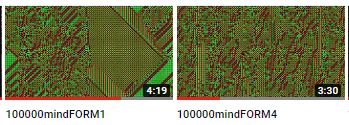
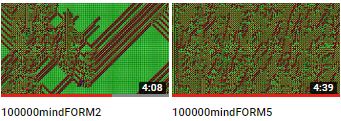
Unfortunately Youtube swallows the resolution of our latest creations, which is why we only present some mindFORMs on this channel. Those you need in this article can be downloaded here:
https://uformiform.info/downloads
Worth knowing about mindFORMs:
- Each cell constructs its actual FORM.
- The FORM determines its viewing direction/orientation.
- The viewing direction can be understood as an abstraction of orientation:
- “How do you feel today? Imaginary? Uncertain? Marked? Not marked?”
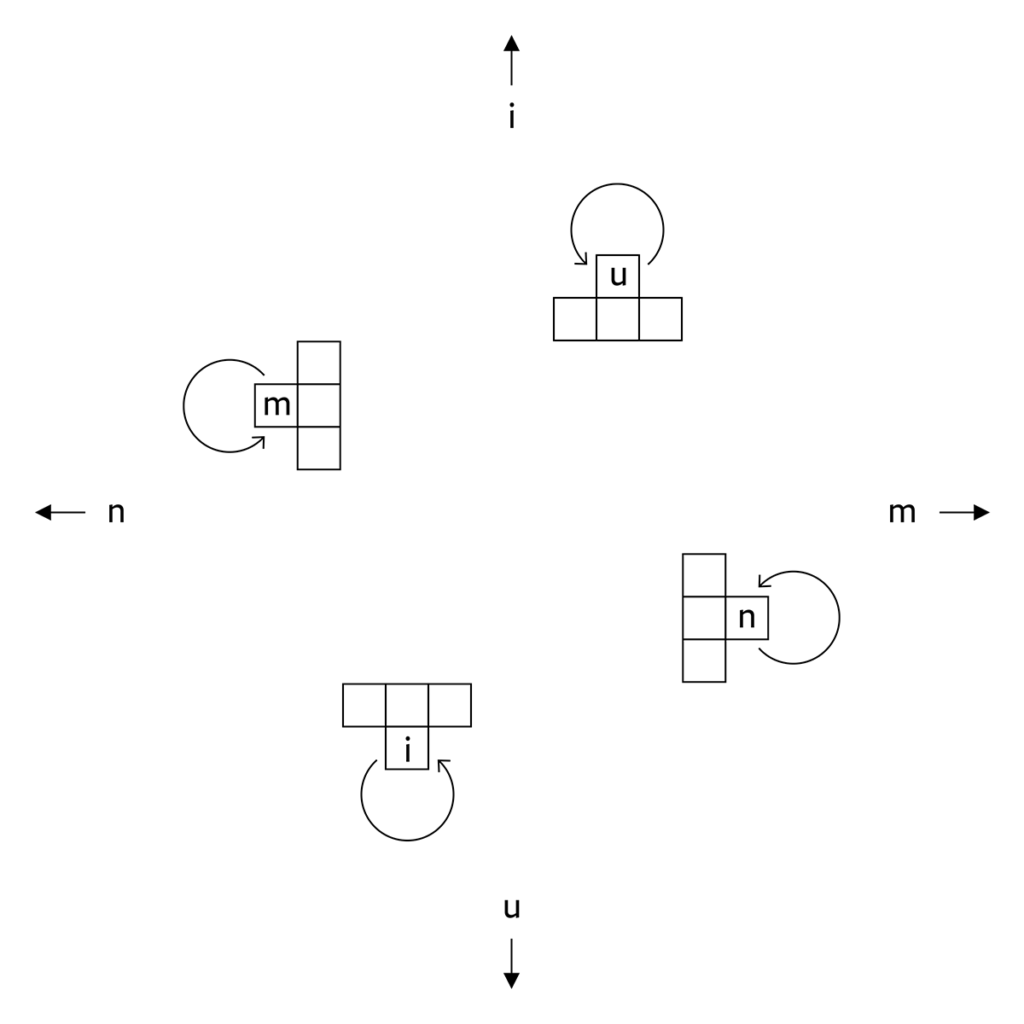
- mindFORMs illustrate FORMsystems/systemFORMs. The abstract attributions reduce the complexity of real systems to a manageable measure and help you to better understand how real systems behave.
- Through its FORM, FORM orientates itself in itself and on its direct environment.
- No single cell determines the total system, but the behavior of all/each individual cell(s) is constitutive for the system.
Everything happens at once and emerges into the autopoietic system.
You could believe that this swarming leads to chaos, but something else happens in cognition and communication:
- Each individual cell determines its own form by the way it observes its surroundings. This behavior of each individual cell of course changes the environment that all cells observe. Thus, from the environmental observation of the individual cells and their self-change grows emergent self-observation of the whole system and its reorganization, self-organization and orientation. Its motions are not pre-programmed, but self-determined. The system makes its own decisions and constitutes its sense on basis of minimal FORM specifications and produces unpredictable complexity of its own.
- Watch how different systems exdifferentiate due to different FORMs and see clearly what this means: We can observe how decisions work in systems and we can compare the exdifferentiations and consider which FORMs we need to get into what kind of system differentiation.
- Structures are modified and then emergent structures emanate.
- The macroscopic structures we recognize determine how the system as a whole can change … or not.
- This is/emulates self-observation, which enables further self-observation.
- Example:
Meditation, focusing, reciprocal referencing … creates macroscopic structure which makes concentration possible. In the meditation object I observe my own construction -> self-observation. - Or another example:
When you look at yourself instead of a meditation object -> look into the mirror. - Abstract:
“What do I know? “What tells me nothing? … thus I create a macroscopic structure in my own consciousness, which becomes regulative for further observations.
111111mindFORM is a good example for how a system relates to itself and forms inclusions:
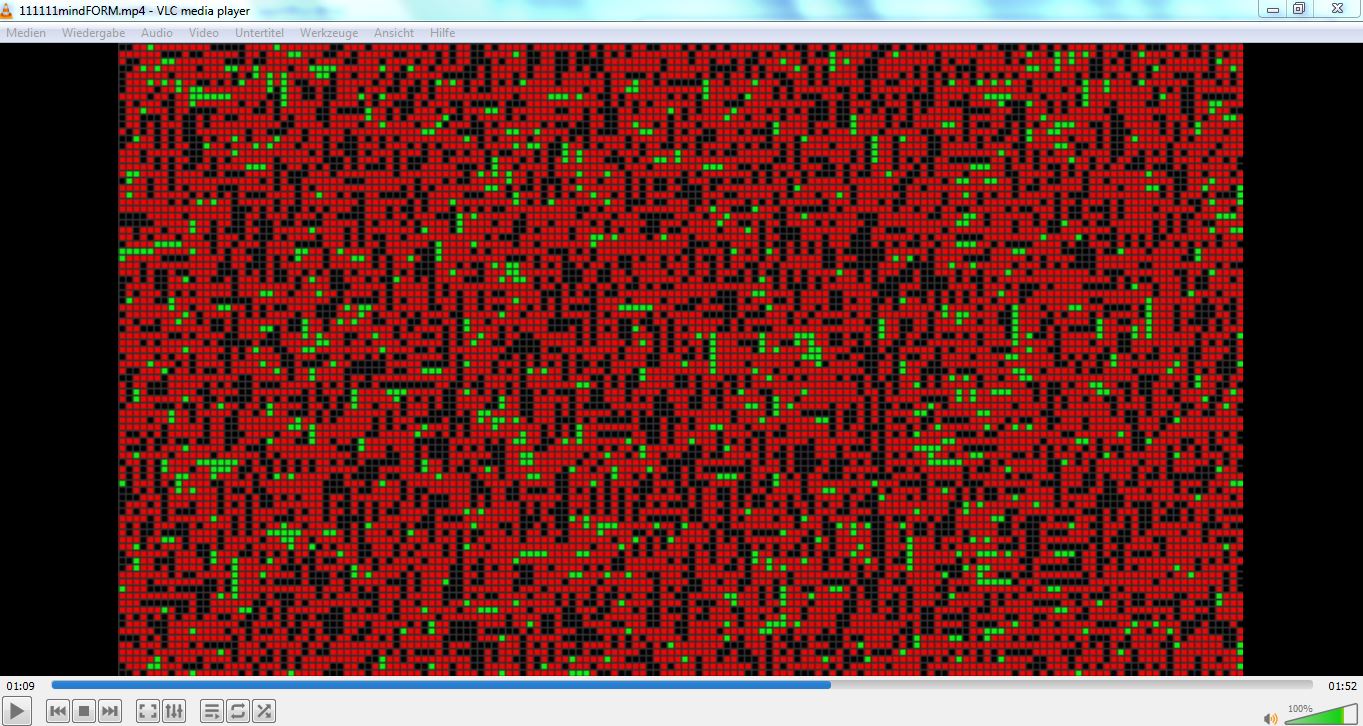
100101mindFORM:
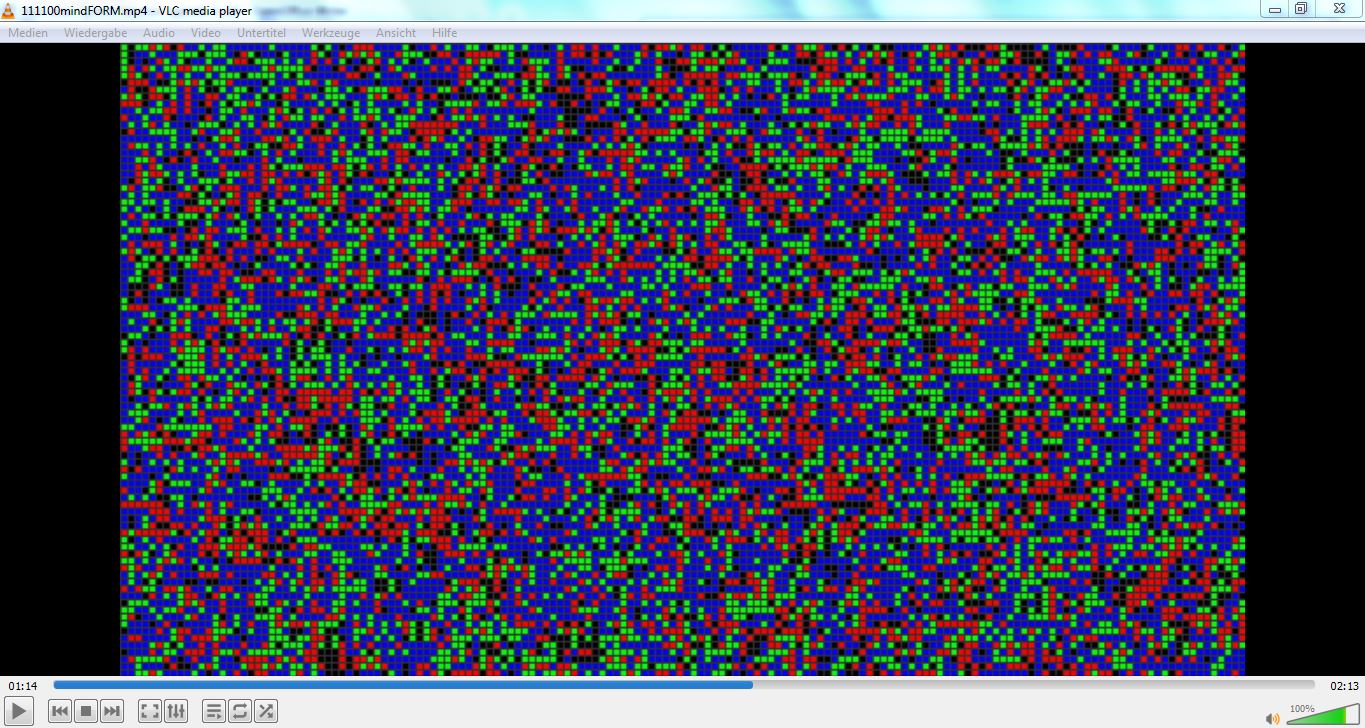
is comparable with the first shown mindFORM111111
and also with mindFORM111110:
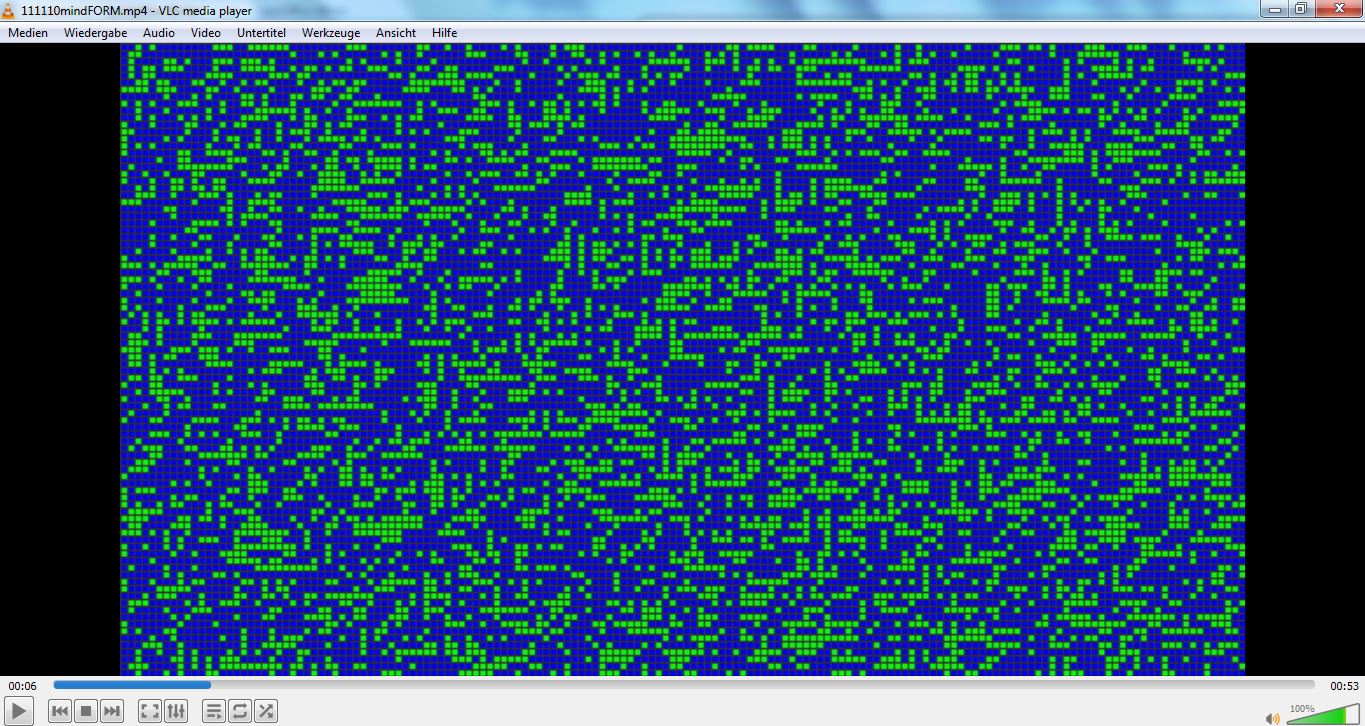
But 100101mindFORM seems (watch video) from time to time bound to get into more solid states, only to switch back into wilder fluctuation:
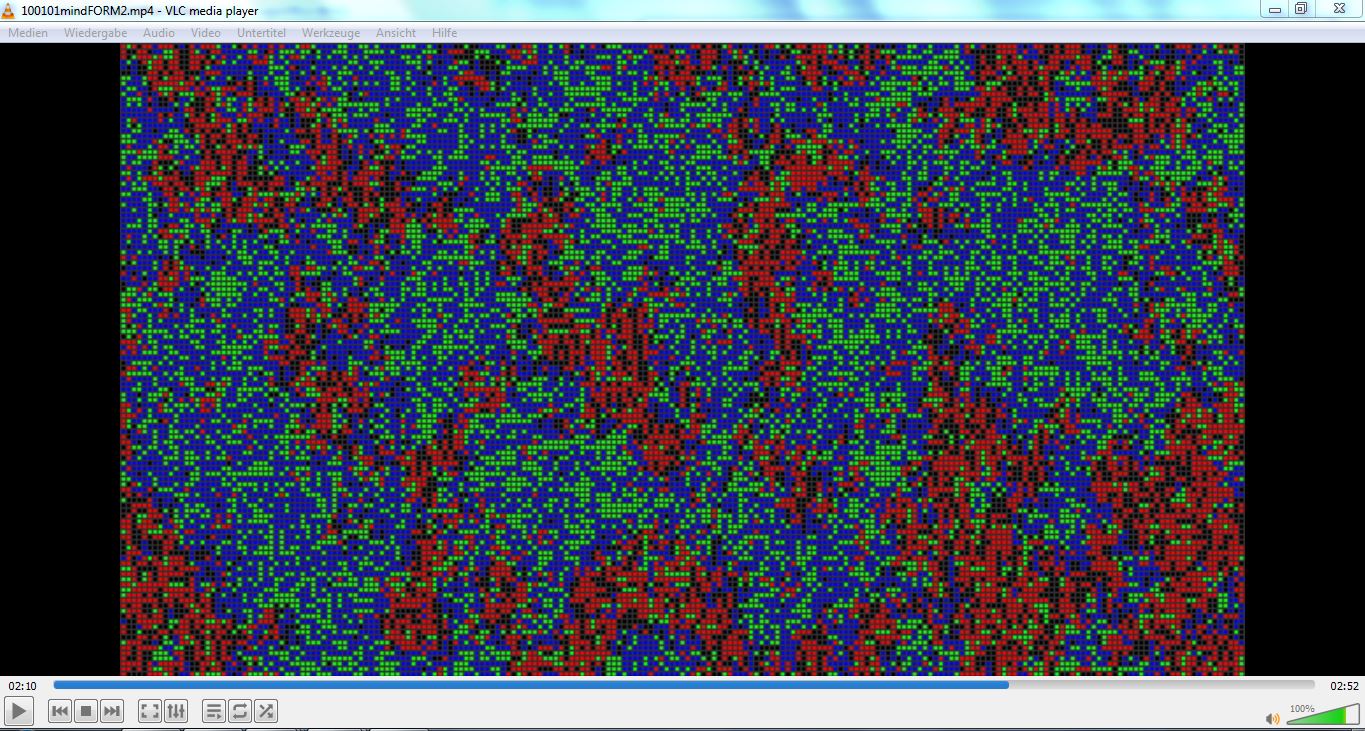
Also have a look at the videos ((@l)r)((@r)l)mindFORM and ((@l)r)((@r)l)mindFORM2 and try to grasp what happens there: how an initial problem, thought, communication is thrown into the system, and how it slowly changes to “What is this? (Undefined) “Not there!” (Not marked) flashing structures FORMing like weather wherein cloud-like FORMations arise, pass by, dissolve, re-emerge, until it finally jumps between two complex states to make a (last?) decision.
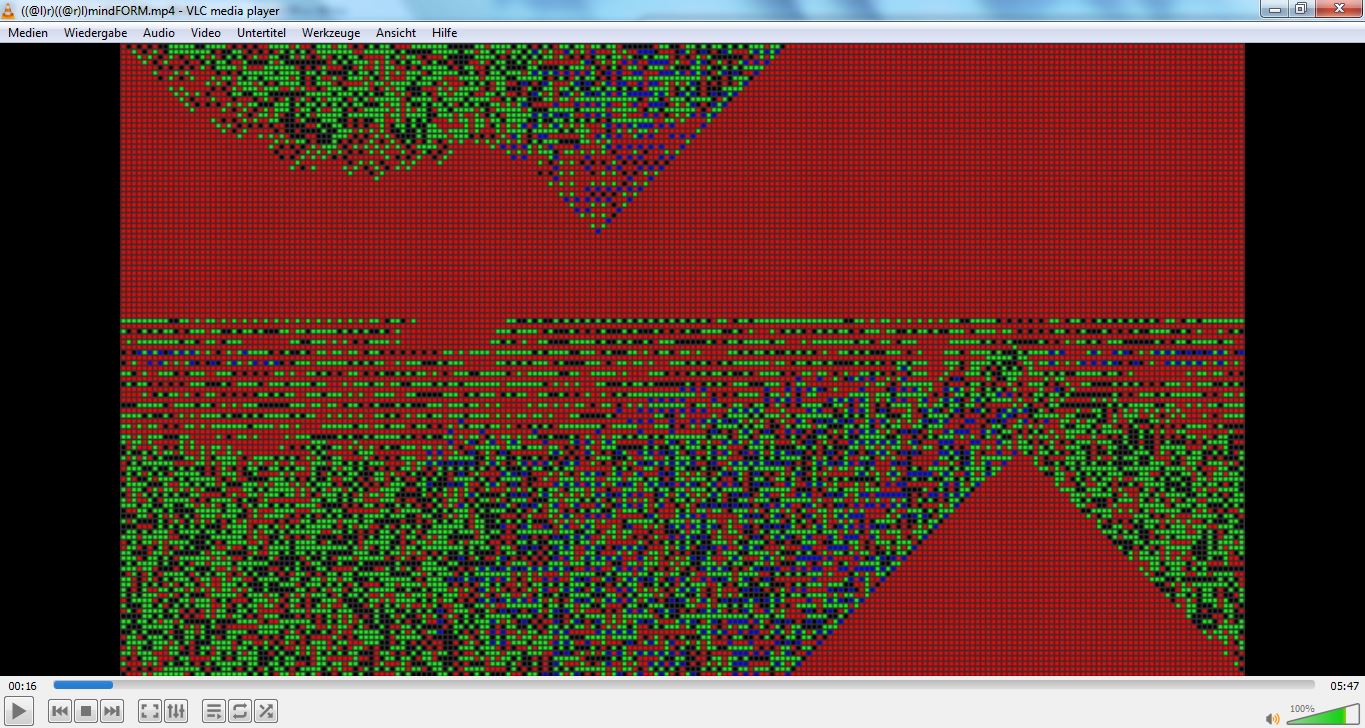
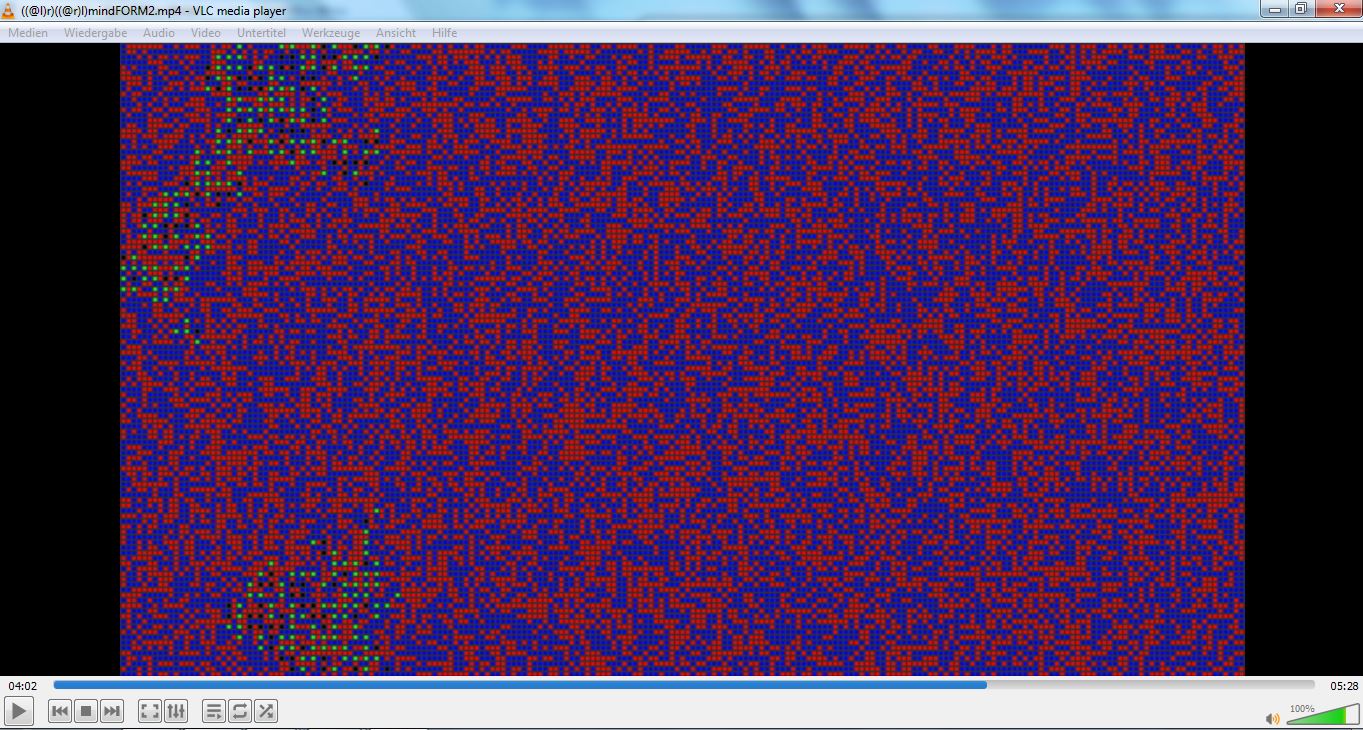
Many of these systems are not simply chaotic, but they perform an interactive dance.
((@l)r)((@r)l)mindFORM and ((@l)r)((@r)l)mindFORM2 first form seemingly chaotic, strongly varying structures, which then partly narrow down and begin to pulsate and no longer get on, they blink back and forth, in order to then bust themselves out of this reduction and unfold new dances, until they come to a reduction again …
What does such behaviour remember you of? Which real systems correspond to such phenomena? Think of wars, social conflicts, electoral processes, communicative giant waves … Then compare the construction FORM and consider what changes in the FORM could deliver which results?
To understand the formation of sense structures and to form a more complex idea of resonance systems, take a look at the 111000mindFORMs. The chains of sense you can observer therein are connected with each other, sometimes like pearls, sometimes forming more complex structures and spaces. You could think of vital questions, and how events sometimes fit magically into each other, so you might tend to believe in fate or divine providence. For me they resemble to brainstorming sessions, but also to long term discussions with friends on grave topics or interwoven political and social patterns.
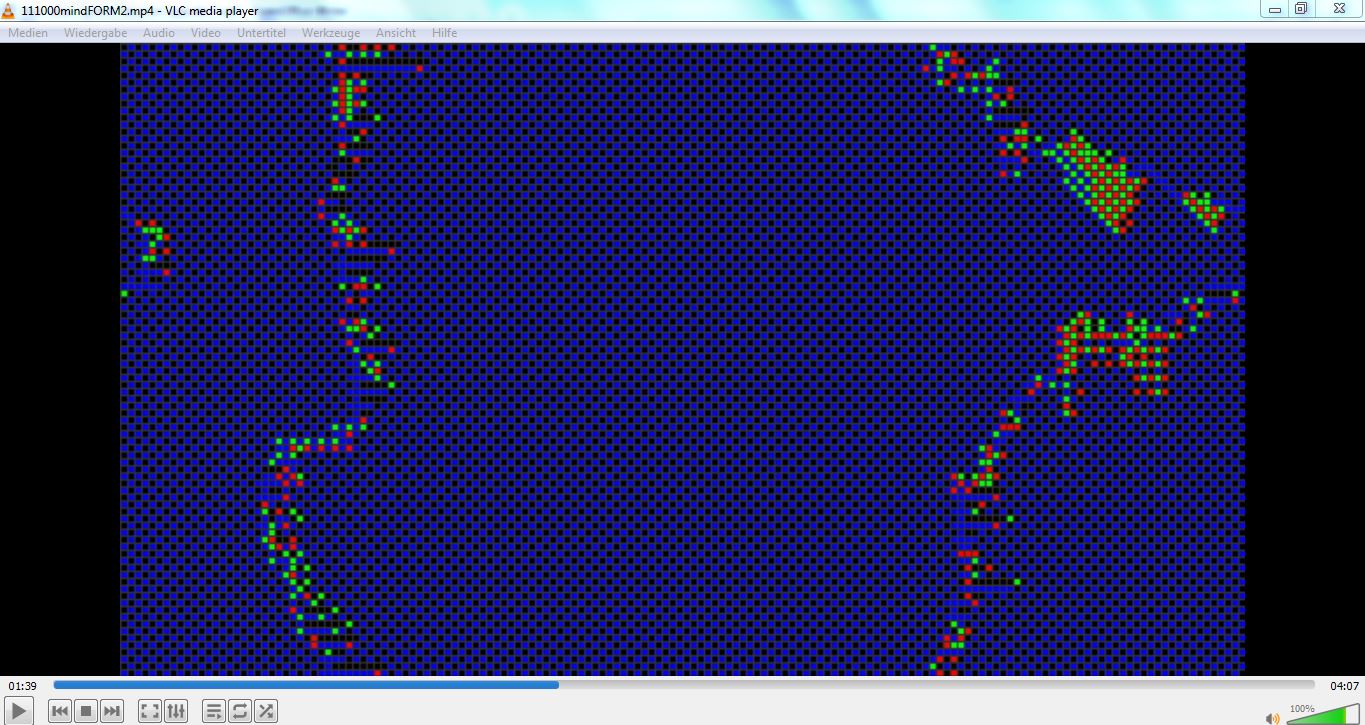
Get creative and always remember how these systems are built. Imagine from different angels that and how they relate to themselves.
In 111000mindFORM2 we see how an idea, a thought, communication … becomes a problem in information and decision systems (such as cognition or communication) and how the system background forms. Against this background (the) system develops strands of sense. These strands of sense are initially connected with each other: Cells in the upper left corner, for example, are connected to cells in the lower right corner. (Remember the construction of the (total) system.)
The sense strands begin to divide, subsystems FORM themselves, stabilize or dissolve.
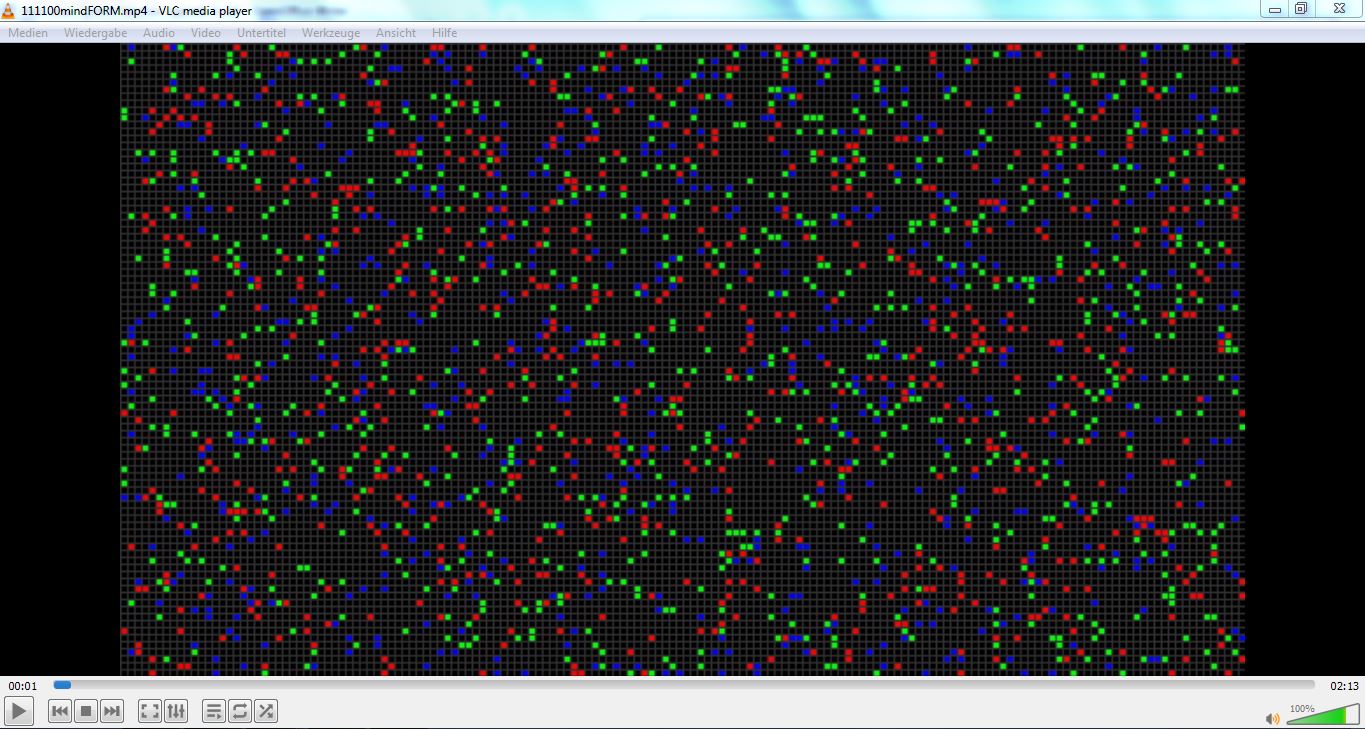
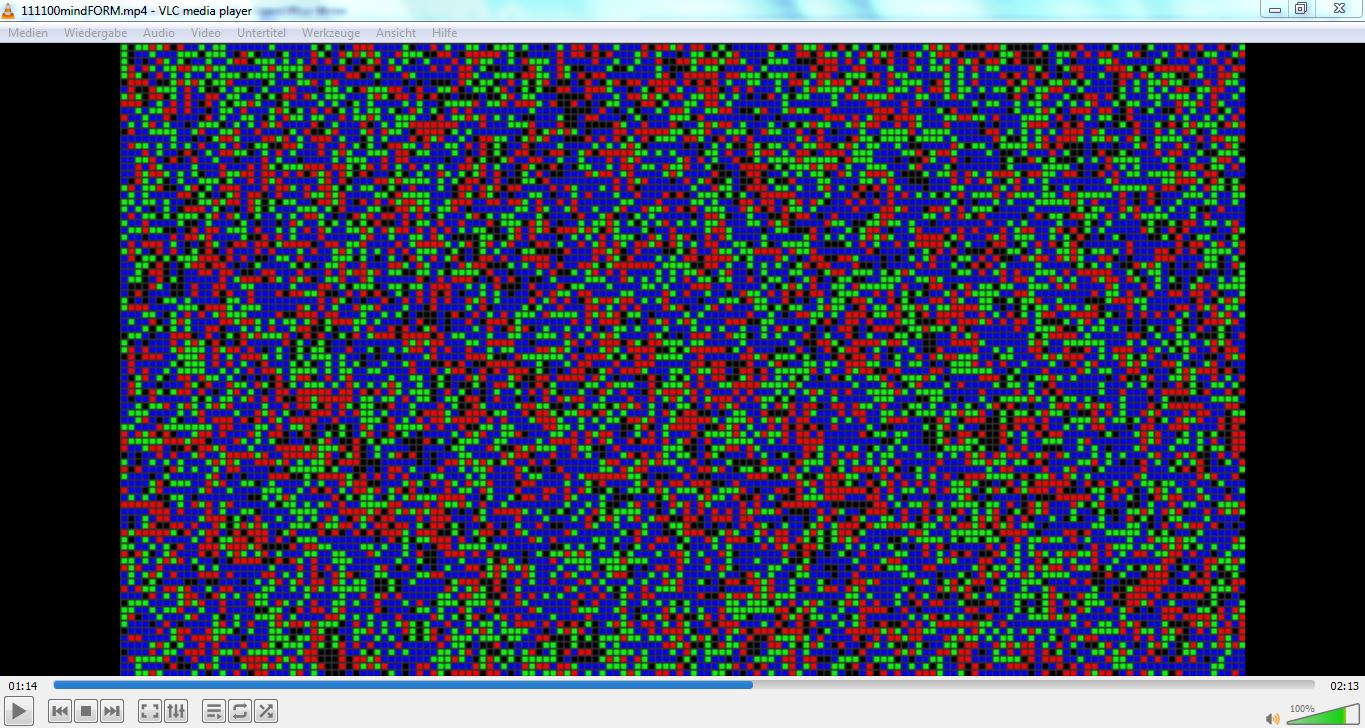



Our emulations help to illustrate how we manage to connect seemingly “distant” thoughts/communications, how time and space play a lesser role in the system because it is always itself.
Our emulations are also helpful for researchers who want to handle complex resonance systems.
Observe how you in consequence start to think about the content of these problems, that you can illuminate them from all sides, and how the whole complex structure evolves in relation to itself, developing “sense weather”, how it tries to determine a background on which it can “think” further about what “it” could be and how “it” continues to play out? Think about how you organize and orientate yourself when you are confronted with things you do not (yet) understand … Think also about how social systems behave when new issues are thrown into them for which they do not yet have behaviour patterns …
I hope that I have been able to motivate you to focus more on our research and look forward to your questions, suggestions and ideas in the comment columns.
Order of related articles for a comprehensive understanding:
- Symmetric conflicts – German – use deepl for translation
- Article series “Im Gleichschritt Marsch” – German – to illustrate how communicative giant waves result in ideologies and how multidimensional thinking can help to cope with higher complexities.
- Article series “Wirklichkeitsemulation” – German – helpful to understand what it makes sense to work with this kind of simultaneously expanding and concretizing science
- Article series “How does System function/operate”
- Article Information – English – use deepl
- Article Communication – Reorganisation of Undetermined
We are now at the end of this series of articles.
I trust it was fun and stimulating for you.
Stay tuned when it comes to shortly:
- Functionality or Ontology
and then
- Complexity and complexity levels
– articles that use all the previous ones to base their contents on new knowledge and to not

